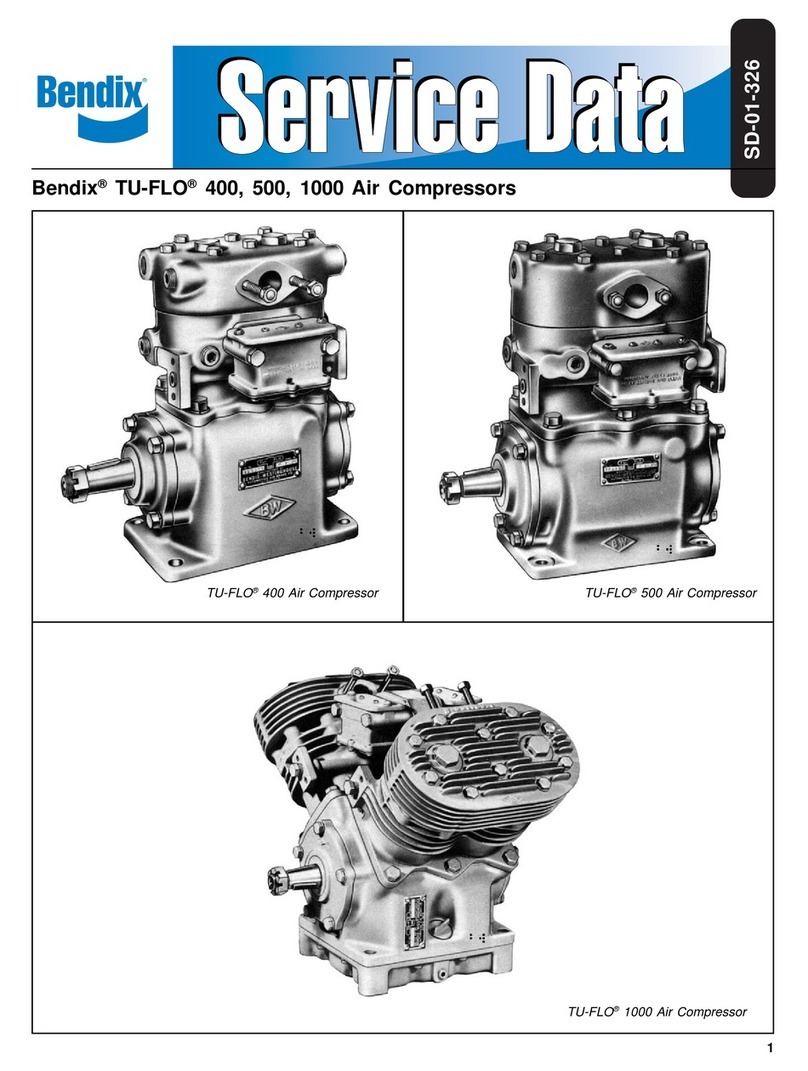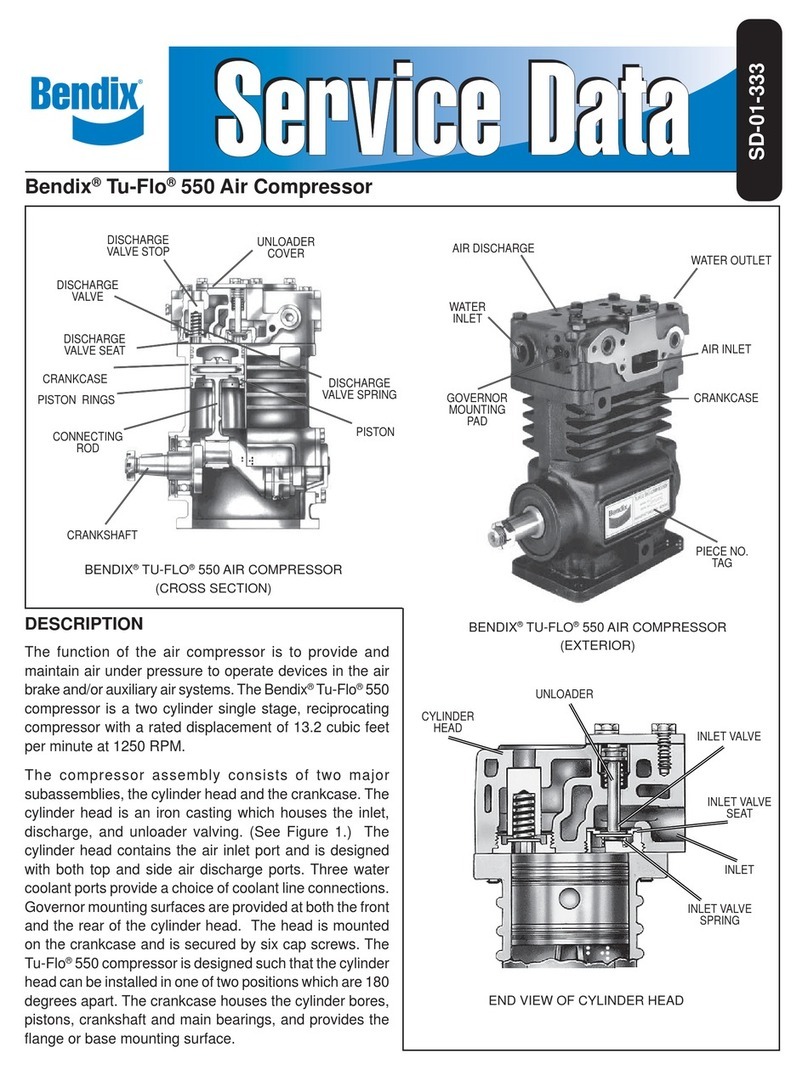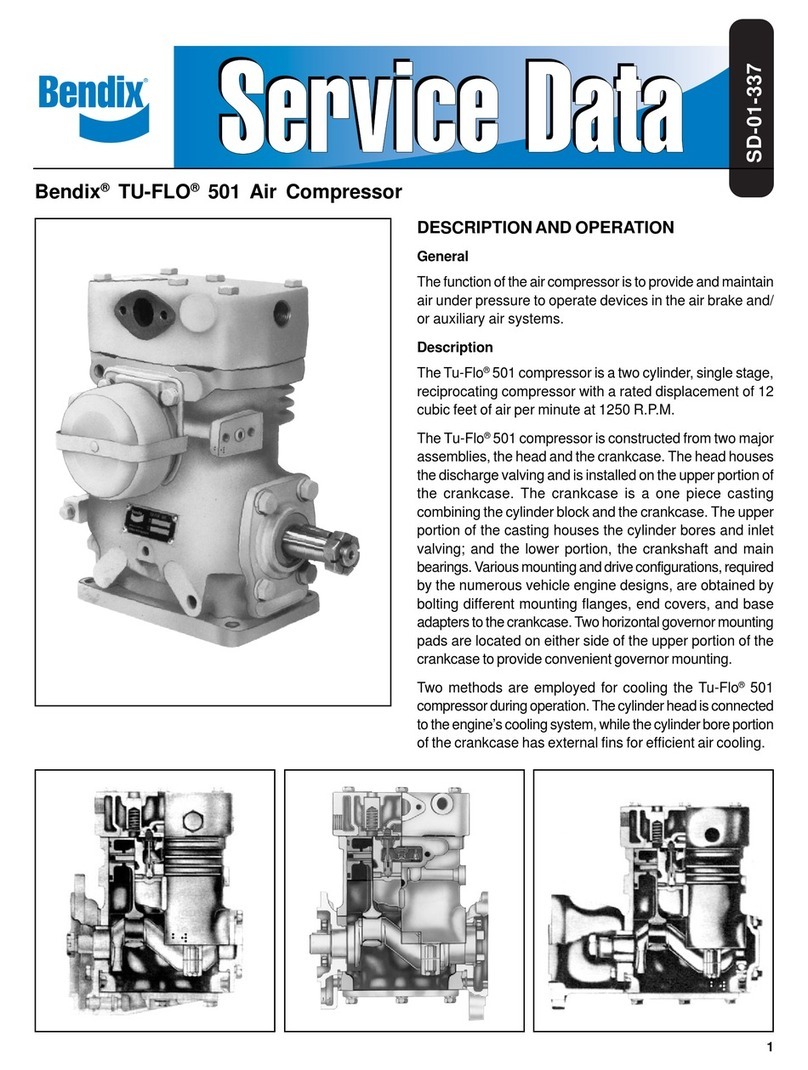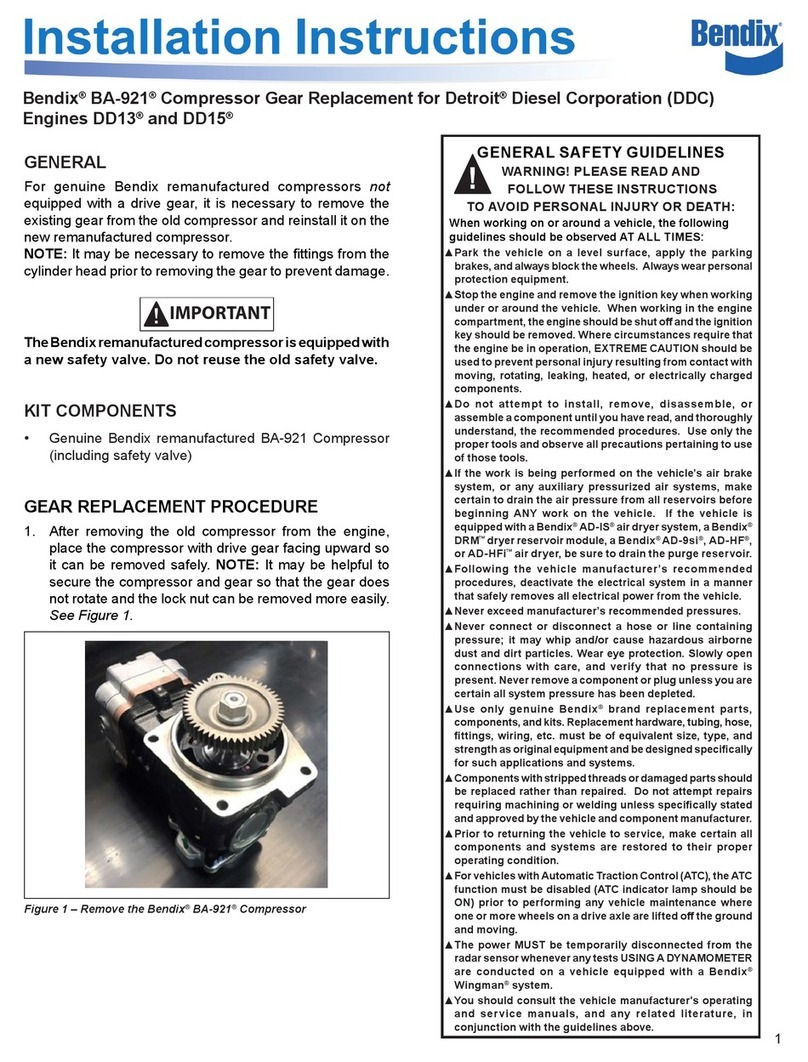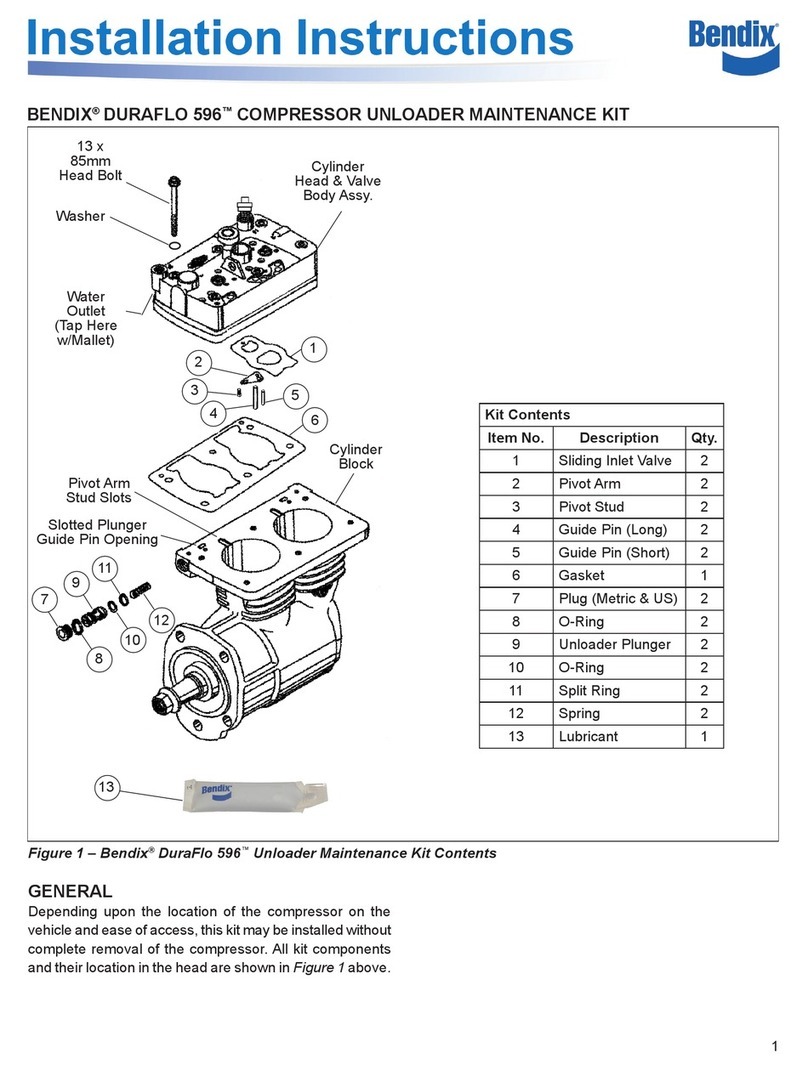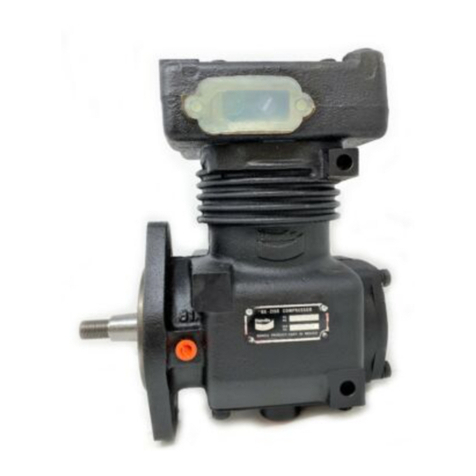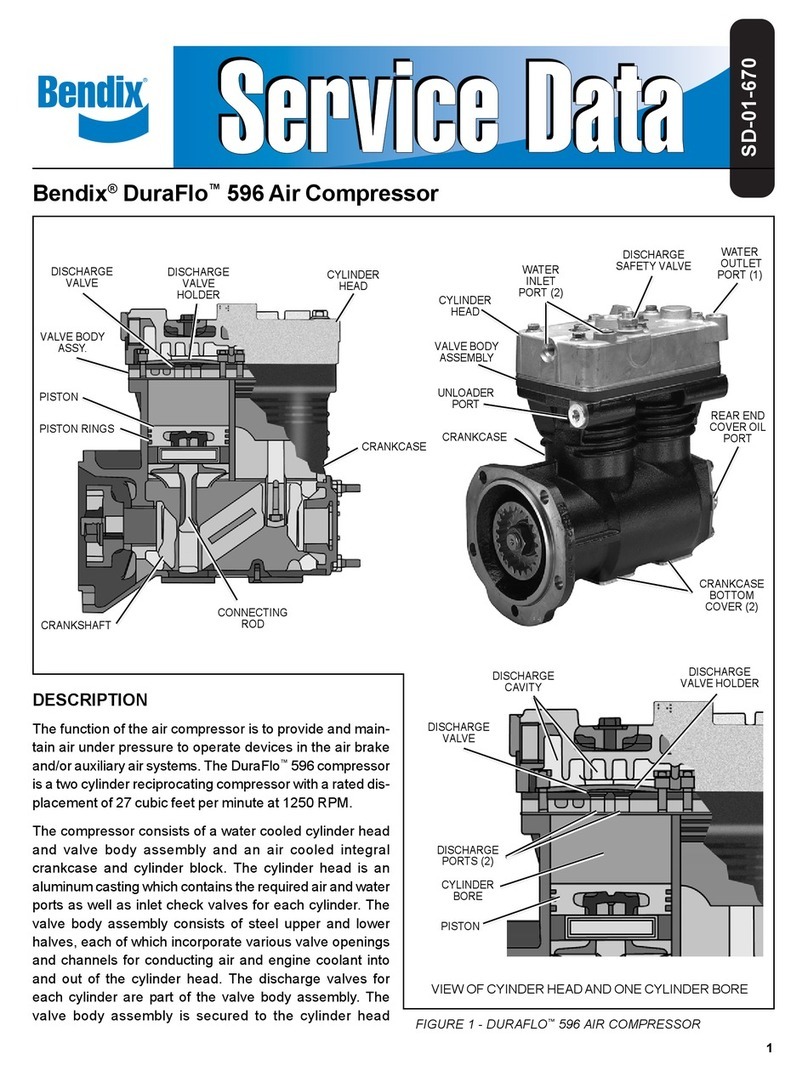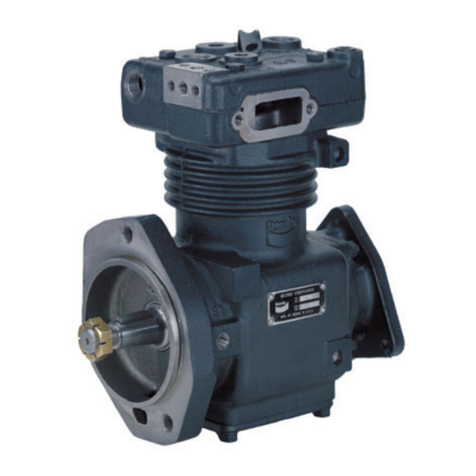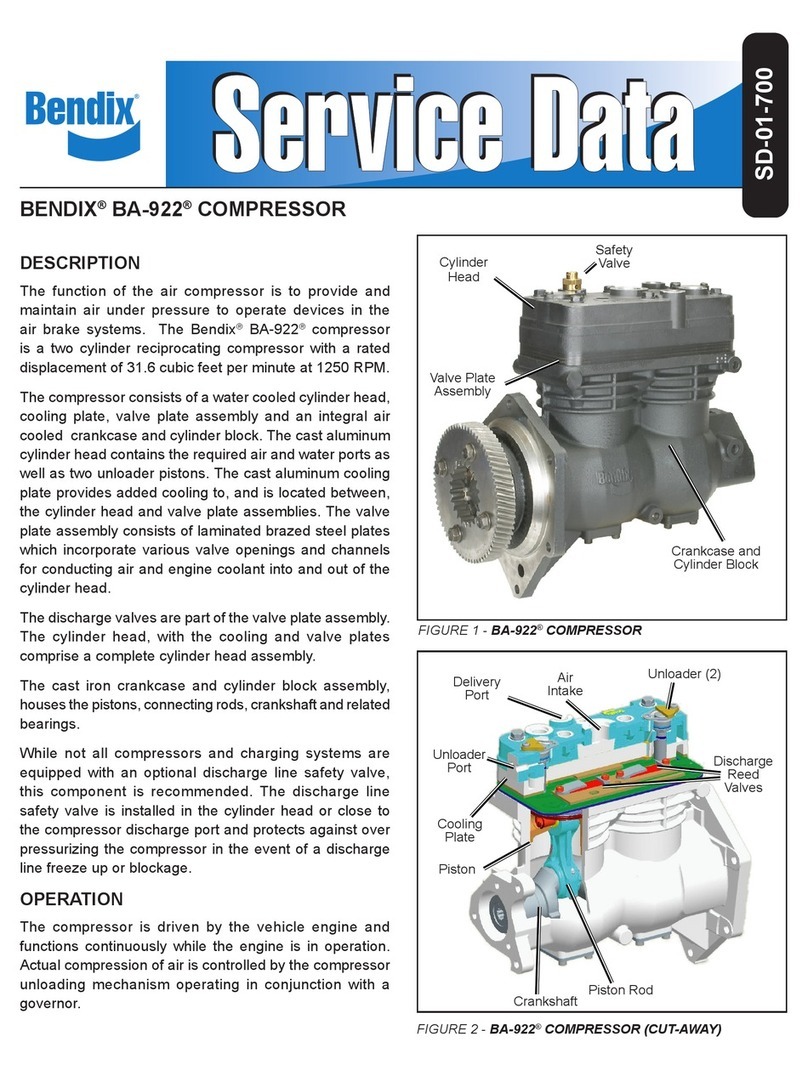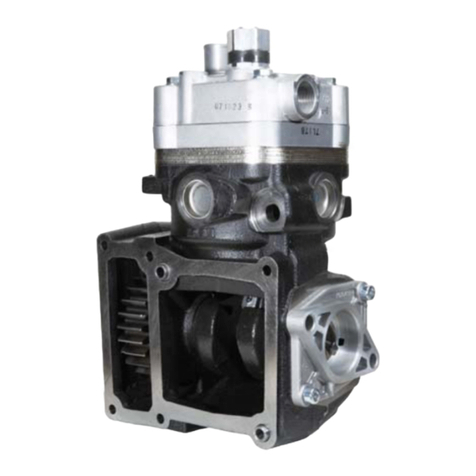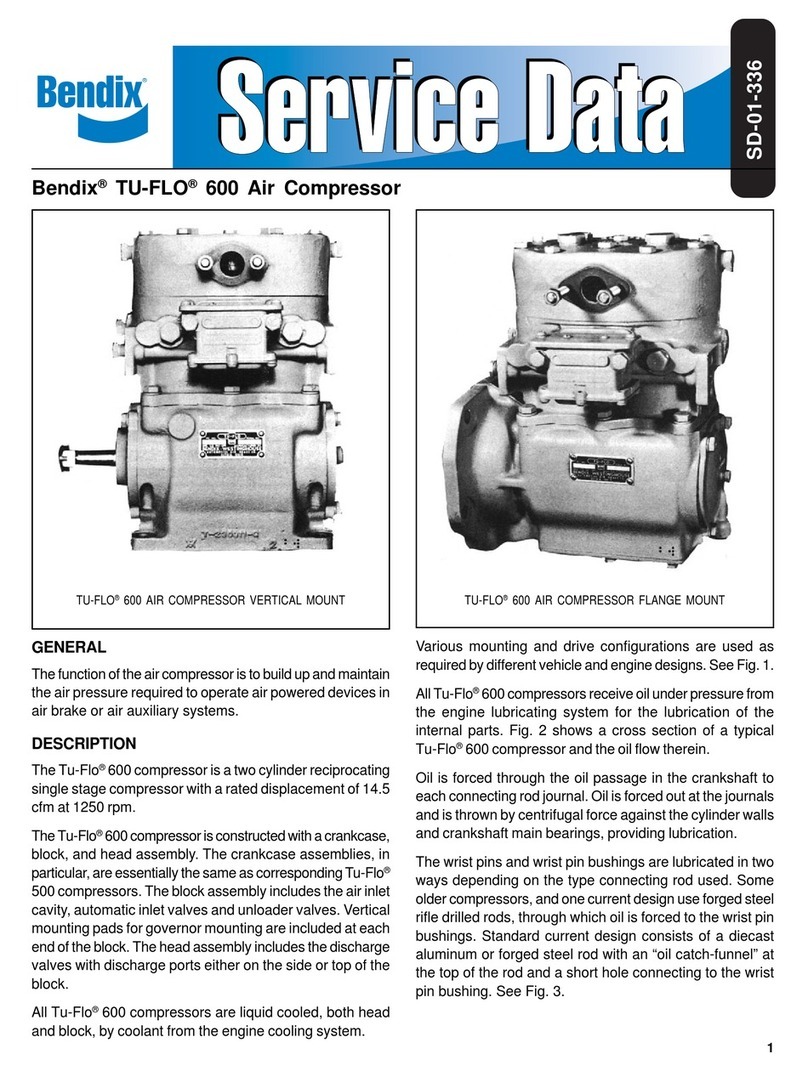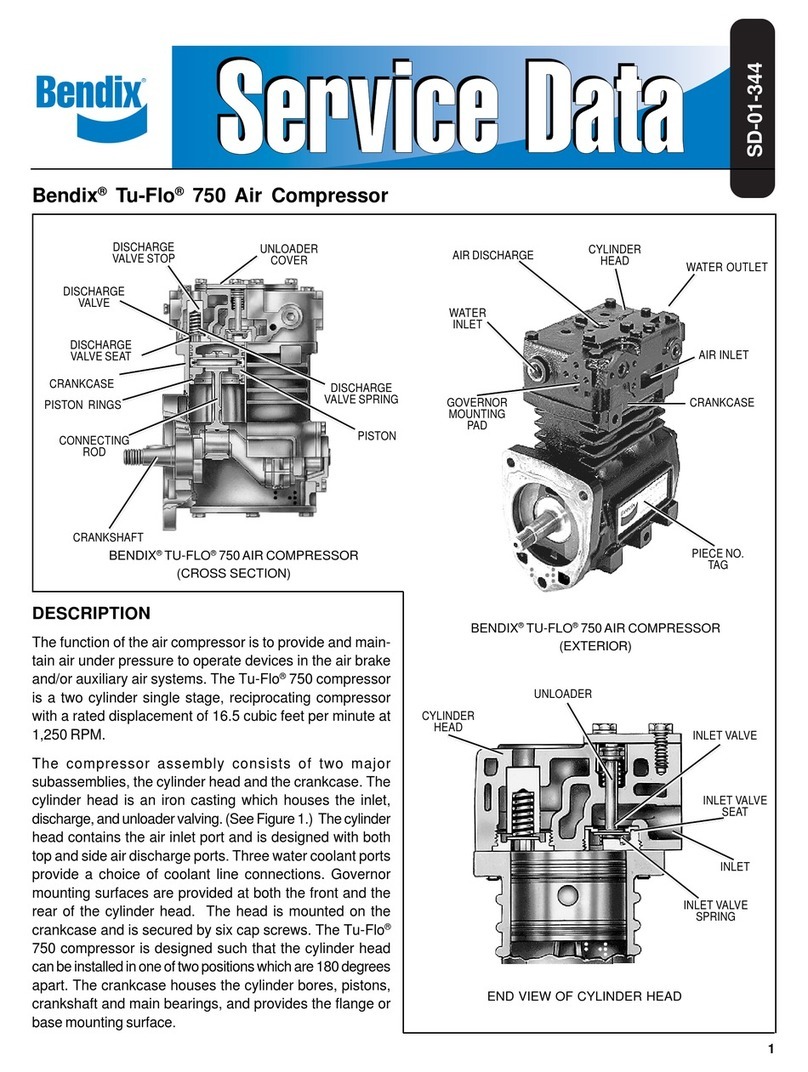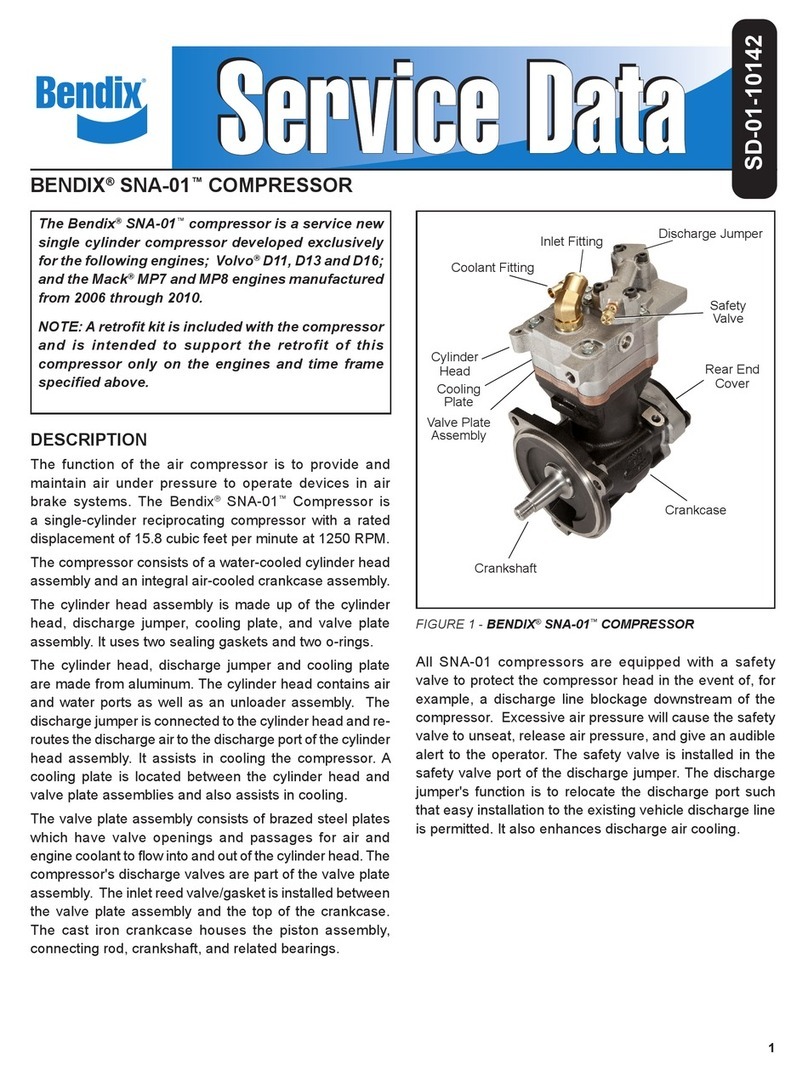
7
DRY ELEMENT - PLEATED PAPER STRAINER
Every two months, 800 operating hours or 20,000 miles
whichever occurs first, loosen the spring clip from the
unhinged side of the mounting baffle and open the cover.
Replace the pleated paper filter and secure the cleaned
cover,making surethefilterisin position.Besure to replace
the air strainer gasket if the entire air strainer is removed
from the compressor intake.
INTAKE ADAPTER
Whenthe engine air cleaneris replaced: Somecompres-
sorsarefittedwith compressor intakeadapters,which allow
the compressor intake to be connected to the engine air
induction system. In this case, the compressor receives a
supply of clean air from the engine air cleaner. When the
engineair filter is changed,the compressor intake adapter
shouldbe checked.Ifit isloose, removethe intakeadapter,
cleanthestrainer plate,if applicable,andreplace theintake
adapter gasket, and reinstall the adapter securely. Check
line connections both at the compressor intake adapter
and at the engine. Inspect the connecting line for ruptures
and replace it if necessary.
COMPRESSOR COOLING
Every 6 months, 1,800 operating hours or after each
50,000 miles whichever occurs first, inspect the com-
pressor discharge port, inlet cavity and discharge line for
evidenceof restrictions andcarboning. Ifexcessive buildup
isnoted, thoroughlyclean orreplace theaffectedparts and
closely inspect the compressor cooling system. Check all
compressor coolant lines for kinks and restrictions to flow.
Minimum coolant line size is 3/8" I.D. Check coolant lines
forinternal clogging fromrust scale.If coolant linesappear
suspicious, check the coolant flow and compare to the
tabulatedtechnical datapresent inthe backof thismanual.
Carefully inspect the air induction system for restrictions.
LUBRICATION
Every six months, 1,800 operating hours or 50,000
miles whichever occurs first, check external oil supply
and return lines, if applicable, for kinks, bends, or restric-
tions to flow. Supply lines must be a minimum of 3/16" I.D.
and return lines must be a minimum of 1/2" I.D. Oil return
linesshouldslope assharplyas possiblebackto the engine
crankcase and should have as few fittings and bends as
possible. Refer to the tabulated technical data in the back
of this manual for oil pressure minimum values.
Check the exterior of the compressor for the presence of
oilseepage andrefer totheTROUBLESHOOTING section
for appropriate tests and corrective action.
OIL PASSING
All reciprocating compressors currently manufactured will
pass a minimal amount of oil. Air dryers will remove the
majorityofoil priortoentranceinto theairbrake system.For
particularly oil sensitive systems the Bendix®PuraGuard®
QC™oil coalescing filter can be used in conjunction with
a Bendix air dryer.
If compressor oil passing is suspected, refer to the
TROUBLESHOOTING section and TABLE A for the
symptoms and corrective action to be taken. In addition,
Bendix has developed the "Bendix Air System Inspection
Cup" or BASIC test to help substantiate suspected exces-
sive oil passing. The steps to be followed when using the
BASICtest are presentedinAPPENDIXAatthe end of the
TROUBLESHOOTING section.
COMPRESSOR DRIVE
Every six months, 1,800 operating hours or 50,000
miles,whichever occurs first,checkfornoisy compressor
operation,which couldindicate aworn drive gearcoupling,
a loose pulley or excessive internal wear. Adjust and/or
replace as necessary.
If the compressor is belt driven, check for proper belt and
pulley alignment and belt tension. Check all compressor
mounting bolts and retighten evenly if necessary. Check
for leakage and proper unloader mechanism operation.
Repair or replace parts as necessary.
Every 24 months, 7,200 operating hours, or after
each 200,000 miles, perform a thorough inspection, and
dependinguponthe resultsofthis inspection orexperience,
disassemble the compressor, clean and inspect all parts
thoroughly, replace all worn or damaged parts using only
genuine Bendix replacements or replace the compressor
with a genuine Bendix remanufactured unit.
GENERAL SERVICE CHECKS
OPERATING TESTS
Vehicles manufactured after the effective date of FMVSS
121, with the minimum required reservoir volume, must
have a compressor capable of raising air system pressure
from85-100psiin 25secondsorless.Thistestisperformed
with the engine operating at maximum recommended
governedspeed.Thevehicle manufacturer mustcertify this
performanceon new vehicleswith appropriate allowances
for air systems with greater than the minimum required
reservoir volume.
